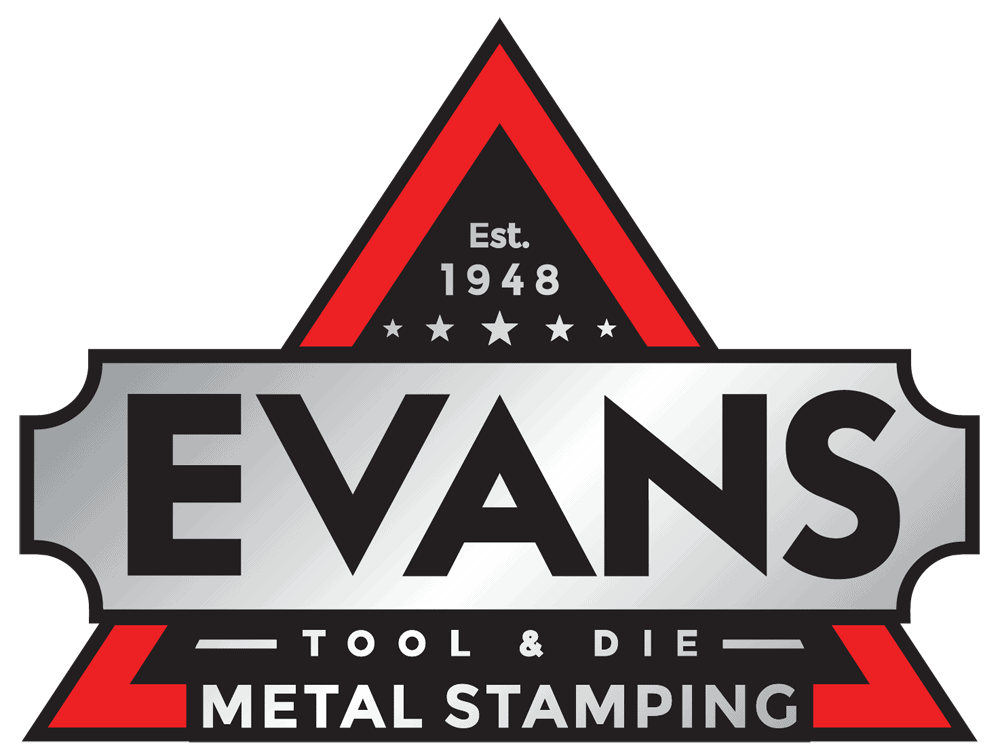Our Interview with Thomas Industry Updates: A Legacy of Craftsmanship: 75 Years of Family-Run Tool and Die Making
We recently had our company featured on the Thomasnet.com platform. Our President & CEO Dee Barnes was interviewed about our company’s 75 years of operation as a family-owned small business. Learn more about our longevity as a company, how we help our customers, and current challenges in the business and how we face them head-on. […]
> Read Full StoryProgressive Die Tooling: The Backbone of Efficient Manufacturing
Click to Expand Progressive die stamping is a versatile and efficient manufacturing process for many industries. Custom tool and die sets are engineered to stamp parts from metal strips as they feed through a press. Here, we’ll look at the progressive stamping process, the components that make up progressive die tooling, and the benefits this […]
> Read Full StoryHow Laser Cutting is Used in the Defense Industry
The military and defense industry relies on mission-critical equipment and vehicles for ground, air, and water-based operations. The parts and assemblies that go into everything from trucks and transport aircraft to satellite equipment must be manufactured on time and without errors to meet MIL-SPEC and performance requirements. Laser cutting is a manufacturing process used often […]
> Read Full StoryWhat are the Different Types of Laser Cutting?
Industrial laser cutting quickly produces uniform metal components that require minimal finishing. It is commonly used with metals and alloy metals, as well as ceramics, some plastics, glass, and textiles in different thicknesses. Lasers can also be used for engraving, annealing, and other operations. Here, we’ll look at how laser cutting works and present four […]
> Read Full StoryLaser Cutting vs. Laser Engraving vs. Laser Marking: Understanding the Differences
Click to Expand A laser is a highly focused beam of light that emits a specific wavelength and heat. A system of mirrors and lenses in the laser machine guides and concentrates the beam into a predetermined focal point. Heat given off by the laser hits a material substrate to permanently alter it, by marking […]
> Read Full StoryHow Tool and Die Making Works
Click to Expand Precision tools and metal forms — known as dies — are responsible for producing most consumer equipment and products in the market. These gears are used to cut, shape, and mold metal and other materials and are made by tool and die markers. Often known as machinists, tool and die makers use […]
> Read Full StoryWhat Is a Tool and Die Maker?
Click to Expand Tool and die makers are an incredible asset for any manufacturing facility. They excel at the top of the metalworking trades, with their mechanical aptitude allowing them to create parts and machines requiring high precision. Moreover, these experts can independently design and construct tools without requiring managerial oversight or instruction. The highest […]
> Read Full StoryHow To Find the Right Tool and Die Maker
Click to Expand Tool and die makers are some of the most skilled workers in precision manufacturing; they craft tools and metal forms needed for stamping and other forging operations. The work of a tool and die maker entails analyzing design specifications cutting and shaping metal, assembling parts, and testing completed products for use in […]
> Read Full StoryUnderstanding Tool And Die Engineering And Manufacturing
Click to Expand Tools and dies are essential to the manufacturing industry; without these, cutting, forming, or shaping metals would be unthinkable. A tool-and-die business can help other companies manufacture and innovate products for various industries, from automotive parts, to medical components, to everyday household items. Some machinists and tool and die makers use computer-aided […]
> Read Full StoryHow To Choose a Tool and Die Shop
Click to Expand The tool and die industry allows people to innovate and make custom parts for the automotive, technology, and aeronautic industries. Tool and die shops are responsible for fabricating dies, molds, and tooling using specialized cutting technology. They help manufacturers and customers create durable and complex machine tools, cementing their spot as key […]
> Read Full Story
